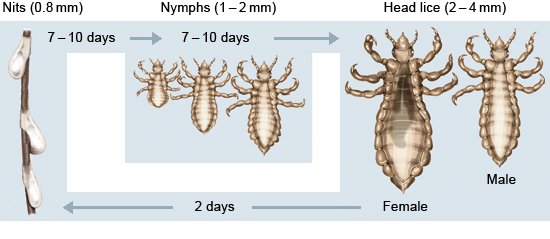What can you do about head lice?

Head lice don't go away on their own. But there are a number of easy, fast and effective treatments that get rid of them. Many lice treatments don't have any insecticides in them (chemicals that kill insects). Treatments that contain silicone oil are usually recommended nowadays.
Head lice are parasites that spread through hair-to-hair contact and attach to hair near the scalp. They are most common in children.
The lice often cause itching, but are not harmful to your health. Two main types of treatments effectively get rid of head lice: insecticide-based treatments and oil-based treatments that suffocate the lice. They differ in terms of how they are used, how they work, and their pros and cons. In Germany, most of these treatments are available from the pharmacy free of charge if they have been prescribed for children under the age of 12. If you aren't sure, you can ask your doctor or pharmacist.
Special lice combs can be used to check whether there are still any lice or nits (lice eggs) in the hair after the treatment. The teeth on a lice comb are 0.3 millimeters apart at the most, to catch as many lice as possible. You can also use special nit combs to remove the eggs. Nit combs are even finer-toothed than lice combs.

